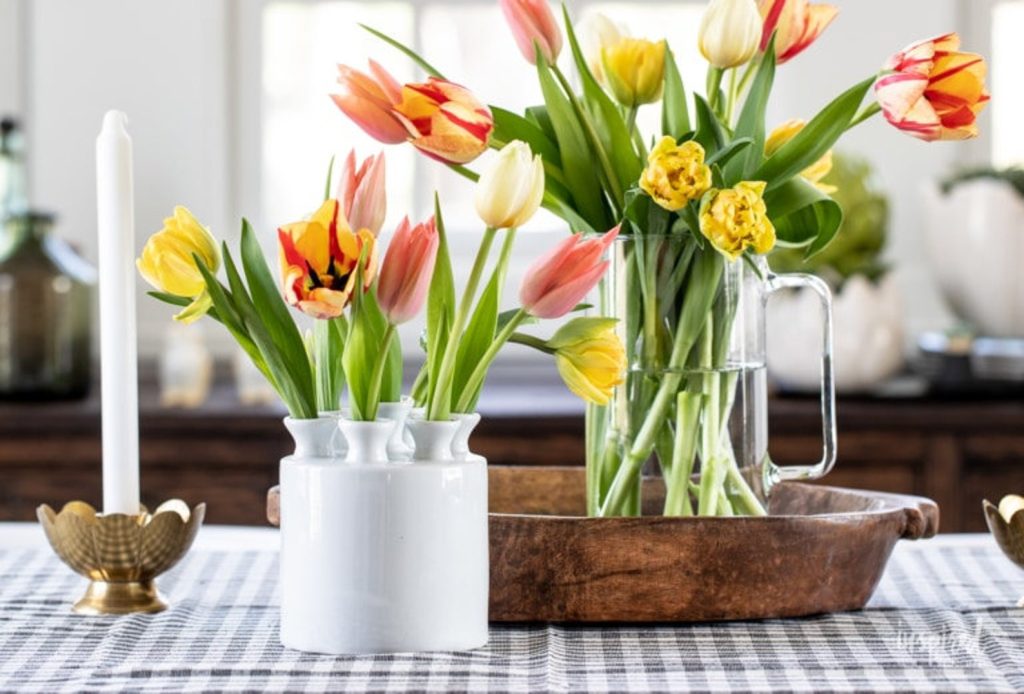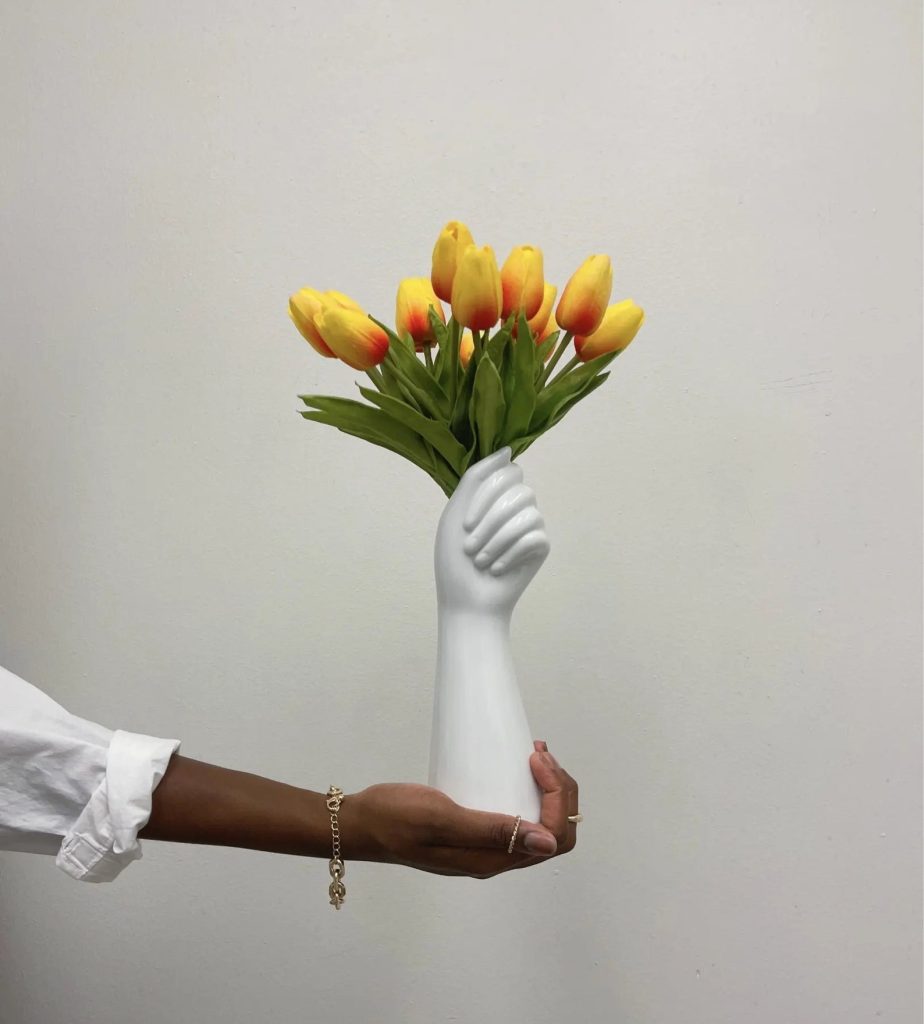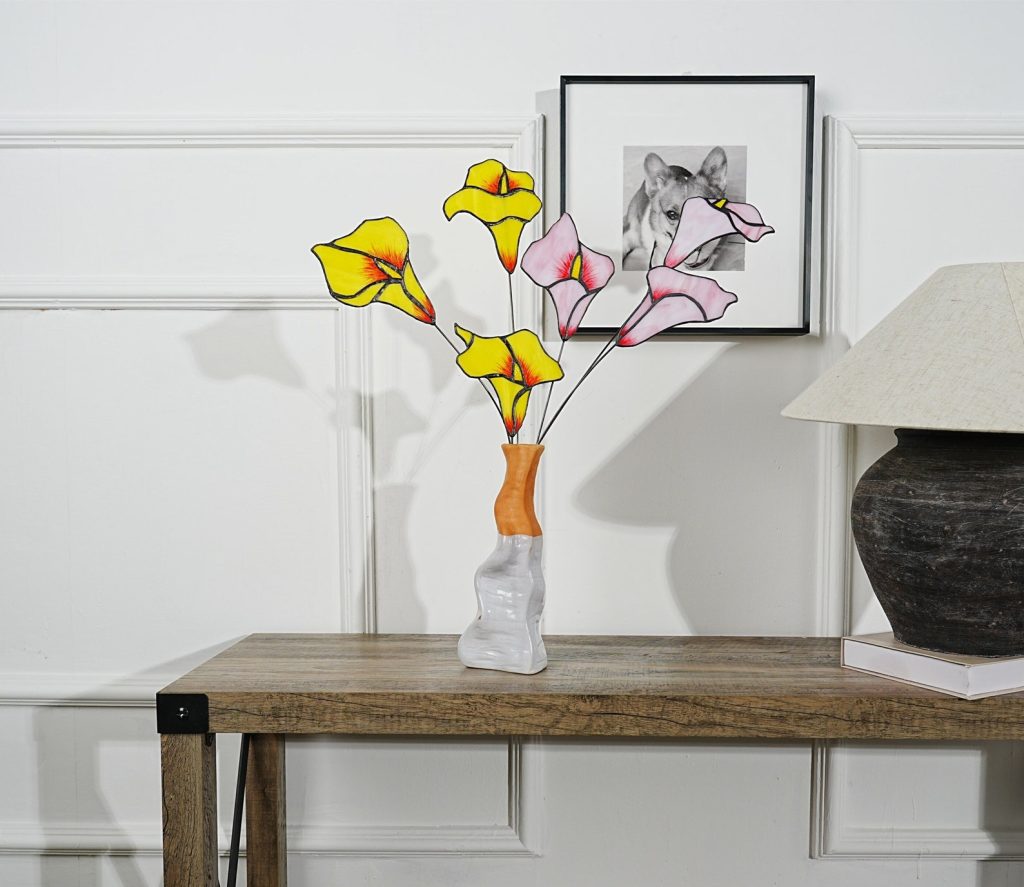Vase
How to Choose the Right Vase for Every Flower Arrangement
When it comes to creating stunning floral arrangements, choosing the right vase is just as important as selecting the flowers themselves. The vase sets the tone, enhances the beauty of the flowers, and can elevate the entire look of your home decor. With so many options available, finding the perfect vase for your flower arrangement can seem daunting. This guide will help you navigate the process, ensuring that you select the ideal vase for every type of floral display.

Understanding Vase Types and Their Uses
1. Bud Vases
Description: Bud vases are small and narrow, designed to hold just a few stems or even a single flower. They come in various shapes, such as round, oval, or cylindrical.
Best For: Single blooms or delicate arrangements, particularly flowers with slender stems like roses, tulips, or daisies. They’re perfect for accentuating small spaces like bedside tables, desks, or windowsills.
Tips: Use bud vases in groups for a chic, minimalist look. Mixing different heights and shapes can create an interesting visual display.
2. Cylinder Vases
Description: Cylinder vases have a classic, straight-sided shape and come in various heights and diameters. They are versatile and work well with many types of arrangements.
Best For: Tall, linear arrangements with flowers like lilies, delphiniums, and gladiolus. They are also excellent for submerged arrangements or adding floating candles.
Tips: Ensure the stems are long enough to fill the height of the vase. Adding decorative stones or marbles at the bottom can help stabilize taller flowers.
3. Cube Vases
Description: Cube vases are short and square-shaped, offering a modern and sleek look. They are ideal for compact, dense arrangements.
Best For: Arrangements with shorter stems or full, rounded bouquets like hydrangeas, peonies, and succulents. They are great for centerpieces on dining tables or coffee tables.
Tips: Cut stems to varying lengths to add dimension and avoid a flat appearance. Using floral foam can help hold stems in place.
4. Glass Bowl Vases
Description: These are wide, shallow bowls typically made of glass. Their open shape allows for creative and expansive arrangements.
Best For: Floating flower arrangements, terrarium-style displays, or low, wide bouquets. Flowers like water lilies, floating candles, and succulent arrangements thrive in these vases.
Tips: Consider adding layers of pebbles or sand for a decorative base. Ensure flowers are arranged to spread out evenly, creating a full, lush look.

5. Trumpet Vases
Description: Trumpet vases have a flared shape, narrow at the base and widening towards the top. They are often used in more formal or dramatic arrangements.
Best For: Elegant, cascading arrangements with flowers like orchids, calla lilies, and trailing greenery. They are popular for weddings and special events.
Tips: Balance the weight of the flowers to prevent tipping. Use filler flowers and greenery to create a fuller base that transitions smoothly to the wider opening.
Matching Vases to Flower Types
1. Roses
Vase Recommendation: Cylinder or trumpet vases.
Why: Roses have sturdy stems and voluminous blooms that look stunning in taller, narrower vases. A cylinder vase supports their height, while a trumpet vase highlights their elegant blooms.
Tips: Remove lower leaves to prevent them from sitting in the water, which can cause bacterial growth.
2. Tulips
Vase Recommendation: Cylinder or bud vases.
Why: Tulips continue to grow even after being cut, so they need room to stretch. A cylinder vase provides the vertical space they need, while a bud vase can highlight a few select stems.
Tips: Keep tulips in a cool location to prolong their freshness. Tulips naturally bend towards light, so rotate the vase regularly.
3. Hydrangeas
Vase Recommendation: Cube or glass bowl vases.
Why: Hydrangeas have large, heavy blooms that require a sturdy base. A cube vase provides the support they need, while a glass bowl allows their blooms to spread out beautifully.
Tips: Hydrangeas are thirsty flowers, so keep the water level high and change it regularly to keep them hydrated.
4. Lilies
Vase Recommendation: Cylinder or trumpet vases.
Why: Lilies have long stems and large, dramatic blooms. A taller vase like a cylinder or trumpet will support their height and show off their elegance.
Tips: Remove the pollen stamens to prevent staining and extend the life of the blooms.

5. Peonies
Vase Recommendation: Cube or glass bowl vases.
Why: Peonies have lush, full blooms that look best when they can spread out. A cube vase supports their weight, while a glass bowl allows for a wide, dense arrangement.
Tips: Cut stems at an angle and place them in tepid water to help peonies open fully and last longer.
Choosing Vases for Different Settings
1. Dining Room Table
Vase Recommendation: Low, wide vases like glass bowls or cube vases.
Why: Low vases ensure that arrangements don’t obstruct the view across the table, allowing for easy conversation.
Tips: Choose flowers with a pleasant but not overpowering scent to enhance the dining experience without overwhelming it.
2. Living Room
Vase Recommendation: Tall vases like cylinders or trumpet vases.
Why: Tall vases can create a focal point in the living room, especially when placed on side tables or mantels.
Tips: Match the vase style with your living room decor for a cohesive look. Consider seasonal arrangements to keep the decor fresh.
3. Bedroom
Vase Recommendation: Bud vases or small cylinder vases.
Why: Small vases with a few delicate flowers add a touch of beauty and tranquility without overwhelming the space.
Tips: Choose calming flowers like lavender or chamomile to create a soothing atmosphere.
4. Office
Vase Recommendation: Bud vases or small cube vases.
Why: Compact vases with simple arrangements add a touch of nature to your workspace without taking up too much space.
Tips: Opt for low-maintenance flowers like succulents or air plants that require minimal care.
Tips for Arranging Flowers in Vases
1. Preparation
- Clean the Vase: Ensure your vase is clean to prevent bacterial growth that can shorten the life of your flowers.
- Trim Stems: Cut stems at a 45-degree angle to allow for better water absorption.
- Remove Leaves: Remove any leaves that will be below the water line to prevent rot.
2. Arranging Techniques
- Start with Focal Flowers: Place the largest or most eye-catching flowers first to create a focal point.
- Add Fillers: Use filler flowers and greenery to add volume and texture around the focal flowers.
- Balance: Arrange flowers evenly to avoid a lopsided look. Rotate the vase as you work to check the arrangement from all angles.
3. Water and Maintenance
- Water Level: Keep the vase filled with clean water, changing it every couple of days.
- Flower Food: Use flower food to nourish the blooms and extend their life.
- Pruning: Remove any wilted flowers or leaves to keep the arrangement looking fresh.

Conclusion
Choosing the right vase for your flower arrangement is a crucial step in creating a beautiful and cohesive display. By understanding the different types of vases and how they complement various flowers and settings, you can enhance the beauty of your home with stunning floral arrangements. Whether you prefer the elegance of a trumpet vase, the modern appeal of a cube vase, or the versatility of a cylinder vase, the right choice can make all the difference. Happy arranging!
